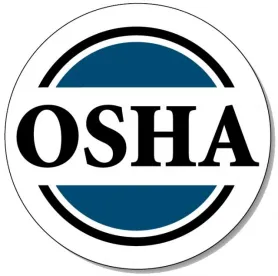As employers, manufacturers are aware of their responsibility for knowing the safety standards applicable to their businesses. But many do not understand their rights and obligations during the inspection process. In recent years, after adding more than 100 compliance officers, OSHA (Occupational Safety and Health Act) has been increasing the number of inspections, citations, and litigation it undertakes. The following tips should help you properly handle OSHA inspections.
Warrant process
The Fourth Amendment of the U.S. Constitution protects citizens (including employers) from unreasonable searches and seizures. The Fourth Amendment applies to OSHA inspections as well. An employer has the right to refuse OSHA entry for an inspection without a warrant, unless imminent danger and disaster exists. Obtaining a warrant usually takes two to three days.
Before an OSHA Inspection
Before OSHA visits your facility, ensure that all required OSHA-related posters are posted, including OSHA-3165, and address all open and obvious hazardous conditions.
Inspection Process
-
Welcome the compliance officer when he/she arrives on site, show them to a private conference room, ask to see the compliance officer’s credentials and make a copy of them.
-
Tell the compliance officer that you need to notify management and safety personnel. The compliance officer should not be allowed to enter the facility without management and safety personnel present.
-
Safety personnel should have equipment on hand to document the visit either by video or photography. Nothing else should be brought into the conference room.
-
Limit the inspection to specific machinery involved, and never agree to a wall-to-wall inspection. In the event that the scope and parameters cannot be agreed upon, you may require the compliance officer to present a warrant before being permitted to conduct the inspection.
-
Identify the most direct inspection route possible to avoid giving the compliance office additional reasons to review areas outside the agreed-upon scope and parameters.
-
The compliance officer will likely request a copy of your OSHA 300 Log, as well as the company’s safety policies that may be involved in the investigation, including lockout/tagout, respiratory protection, hazard communication, and so forth. Generally, the company has eight hours to produce requested materials.
-
Do not chat with the compliance officer beyond basic courtesy, and refrain from introducing him or her to other personnel unless specifically requested to do so.
-
The compliance officer is required to conduct a closing conference, which may occur at the conclusion of the inspection activity, if no further information or inspections are required, or it may occur on a later date. Hold the closing conference in a conference room.




 />i
/>i
